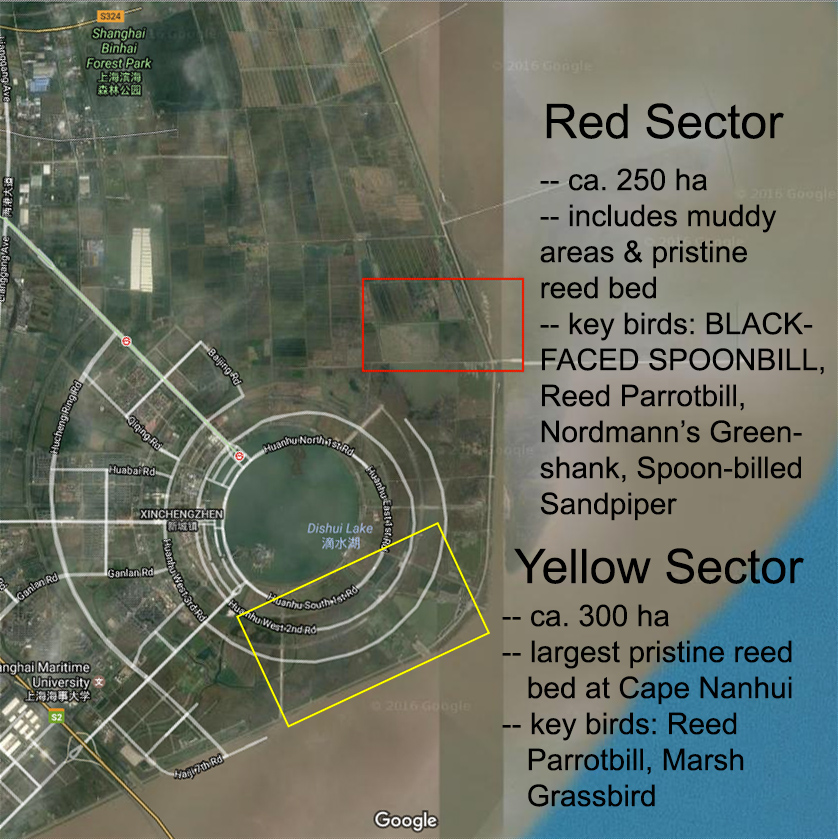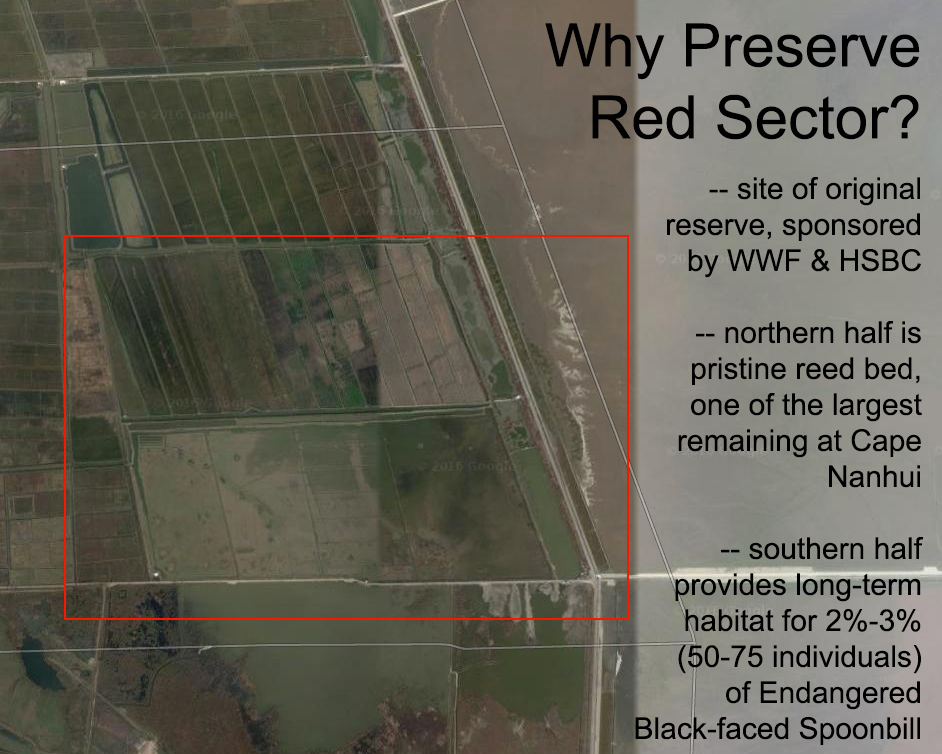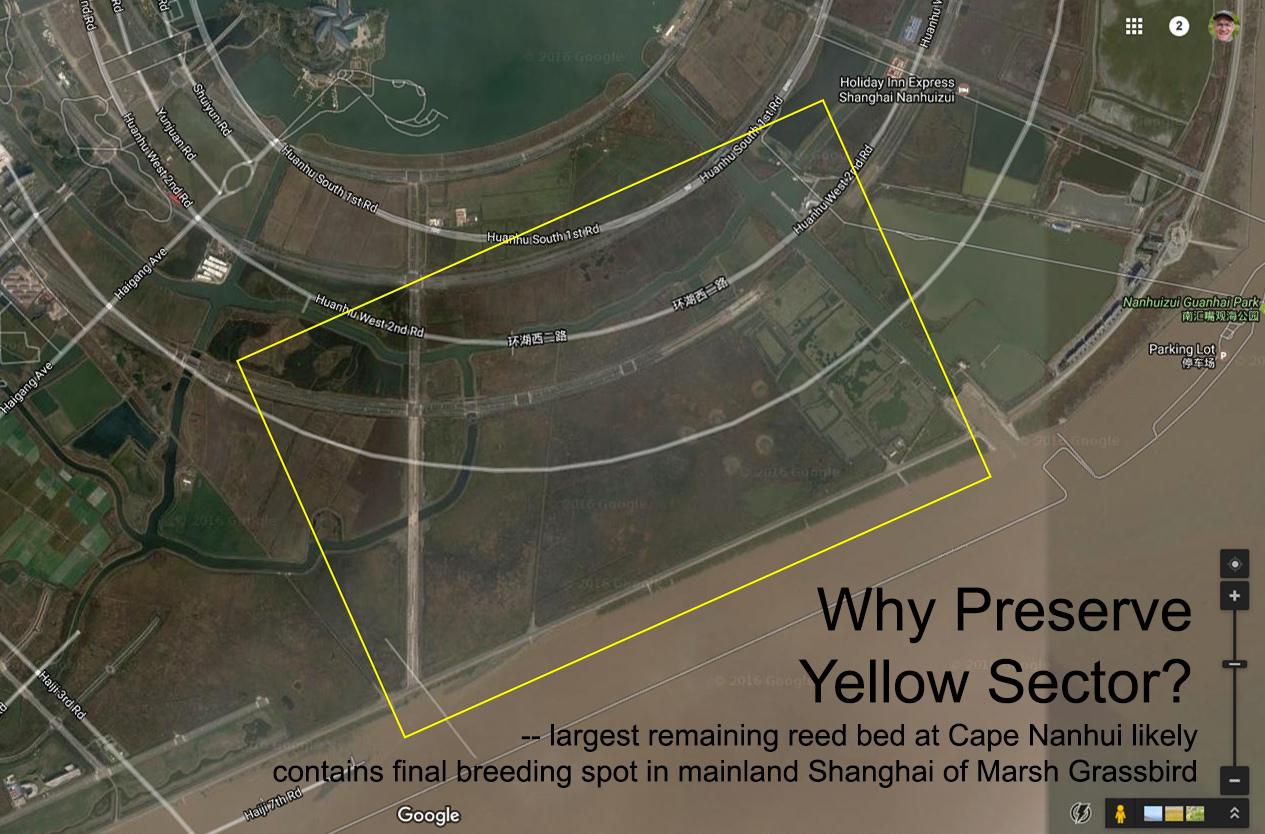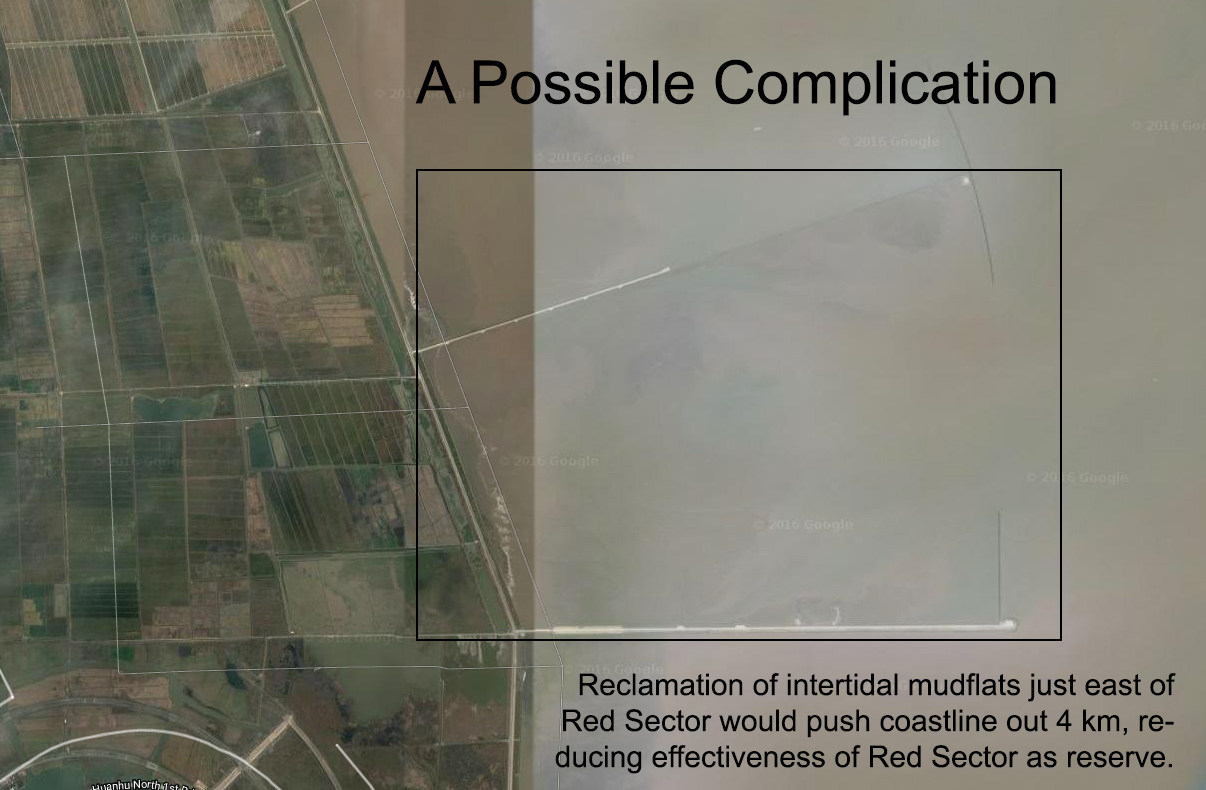by Craig Brelsford
Founder, shanghaibirding.com
On Thurs. 15 Dec. at Cape Nanhui, my wife Elaine Du and I did an interview with Pudong TV in Chinese. The segment will last five minutes and be aired later this month. In the interview I lamented the losses at Nanhui and spoke glowingly of the possibilities.
Meanwhile, John MacKinnon, co-author of the most famous bird guide in the history of China and author of a recent post for shanghaibirding.com, has expressed interest in the establishment of an easily accessible, world-class wetland reserve at Cape Nanhui.
MacKinnon asked me for the reasoning behind a wetland reserve at Cape Nanhui. I wrote the following:
THE CASE FOR AN EASILY ACCESSIBLE, WORLD-CLASS WETLAND RESERVE AT CAPE NANHUI, PUDONG, SHANGHAI

(1) Cape Nanhui is of extraordinary environmental importance. The tip of the Shanghai Peninsula between the Yangtze River and Hangzhou Bay, Cape Nanhui is a stepping stone for birds migrating across those bodies of water. Cape Nanhui also holds large reed beds, habitat critical to Reed Parrotbill, Marsh Grassbird, and other species at risk.
The largest component of the city-province of Shanghai is the Shanghai Peninsula, a projection of land between the Yangtze River and Hangzhou Bay. Cape Nanhui is the tip of the peninsula, is a critically important stop for migrating birds, and is completely unprotected. A nature reserve at Cape Nanhui would form a third stepping stone for birds crossing the mouth of the Yangtze, joining the reserves at Chongming Dongtan and Jiuduansha.

The 2 Red-crowned Crane seen on Sat. 10 Dec. 2016 were the latest in a parade of endangered birds that I and other birders have noted at the Cape over the years. Critically Endangered Spoon-billed Sandpiper uses Cape Nanhui, as does Endangered Nordmann’s Greenshank. Around 2 percent of the world’s Endangered Black-faced Spoonbill are dependent on Cape Nanhui for several months each year. Large reed beds remain at Cape Nanhui and are the final strongholds on the Shanghai Peninsula of Near Threatened Marsh Grassbird and Near Threatened Reed Parrotbill. The latter species, a candidate for Shanghai Provincial Bird, will virtually disappear from mainland Shanghai if the reed beds at Nanhui are destroyed.
(2) Shanghai is clearly under-performing on the conservationist front. More must be done, and a good place to begin is Cape Nanhui.

Nature reserves have been established only on the extreme fringes of the city-province (which is a third the size of Wales). There are no reserves in mainland Pudong, a giant coastal district nearly twice the size of Singapore. Nowhere in this megalopolis can residents without a car enjoy the natural side of Shanghai, a city with an extraordinarily rich natural heritage. There is no known plan to conserve any of the dozens of square kilometers of reclaimed land on Hengsha.
(3) Because it is in the back yard of Shanghai, a city-province of more than 25 million people, a well-run, easily accessible wetland reserve at Cape Nanhui could be the match to light the fire of conservation across all China.
Hundreds of thousands of middle-class children could visit the reserve with their parents using nothing more than the Metro and a quick taxi ride and be sleeping in their own bed that night, dreaming about the wild birds they had seen that day. For millions of parents and their kids, the weekend could be “Saturday, Disney; Sunday, Cape Nanhui Wetland.” A day at a Cape Nanhui Wetland would be an early introduction to the glories of natural Shanghai and would foster an appreciation of the natural world.

If Shanghai can be a world economic center and have world-class airports and a world-class skyline and world-class entertainment such as Disney, then it can and must have an easily accessible, world-class reserve protecting its priceless coastline, reed beds, and migratory birds.
A world-class, easily accessible, wetland nature reserve at Cape Nanhui would become a mecca for birders and achieve world renown, as has been the case with similar reserves such as Mai Po at Hong Kong and Sungei Buloh in Singapore.
INDEX TO POSTS ON SAVING NANHUI
— Messengers (recent records of endangered cranes in Shanghai show the need to protect more land in the city-province)
— The Case for Conserving Nanhui (foreigners can’t do all the work; local Chinese need to step up, too)
— Save the Nanhui Wetland Reserve! (cri de coeur plus call to action)
— Remnants (preparation for probable demise of Cape Nanhui)
— Reed Parrotbill, Symbol of Shanghai (naming Reed Parrotbill Provincial Bird of Shanghai will send a message about the importance of the reed beds such as those at Cape Nanhui)
— Spoon-billed Sandpiper at Nanhui (proof of yet another endangered species using the defunct wetland reserve at Nanhui)
